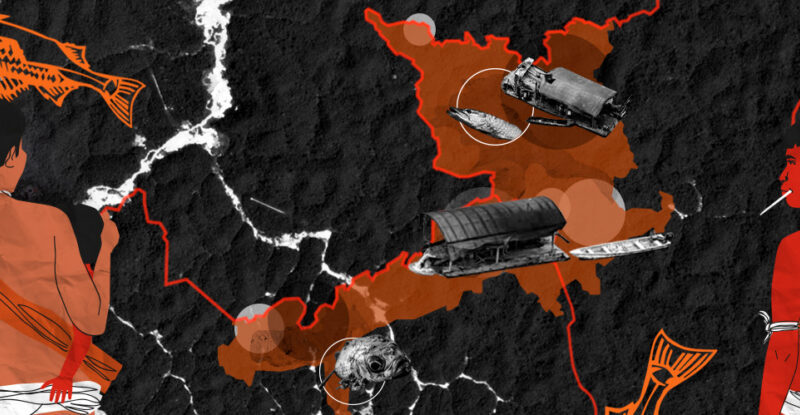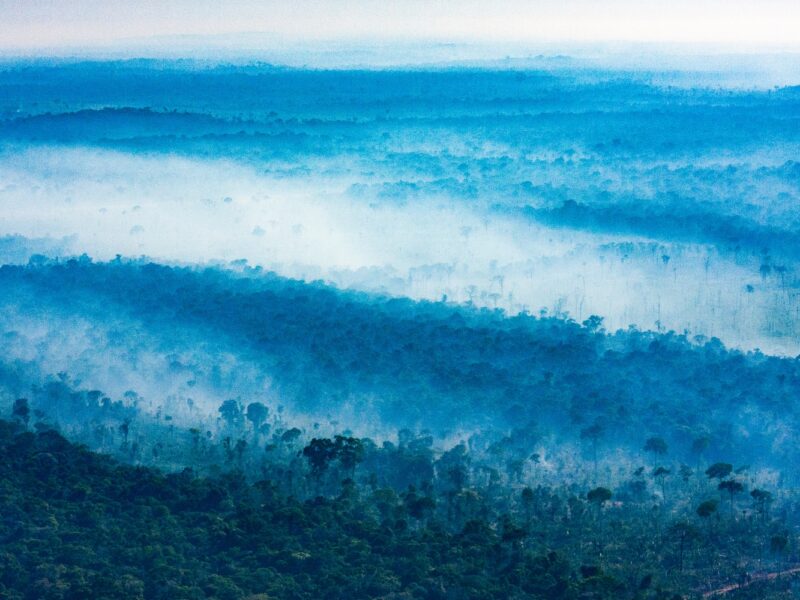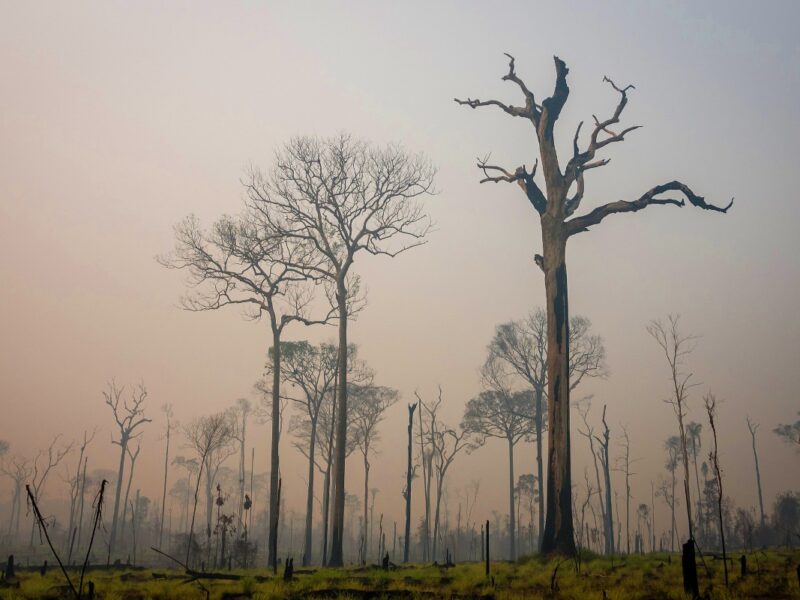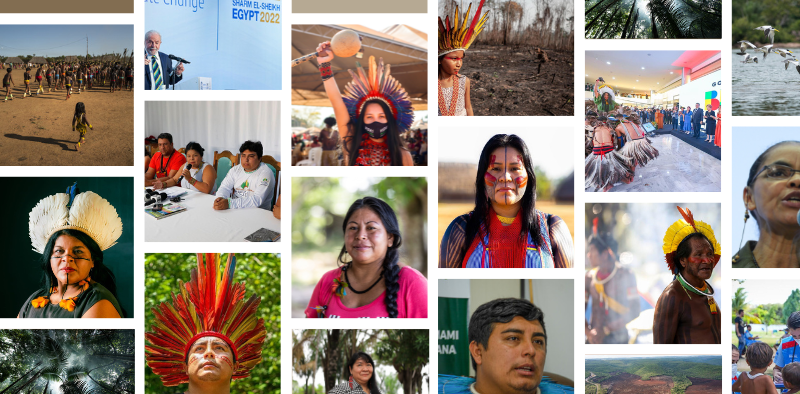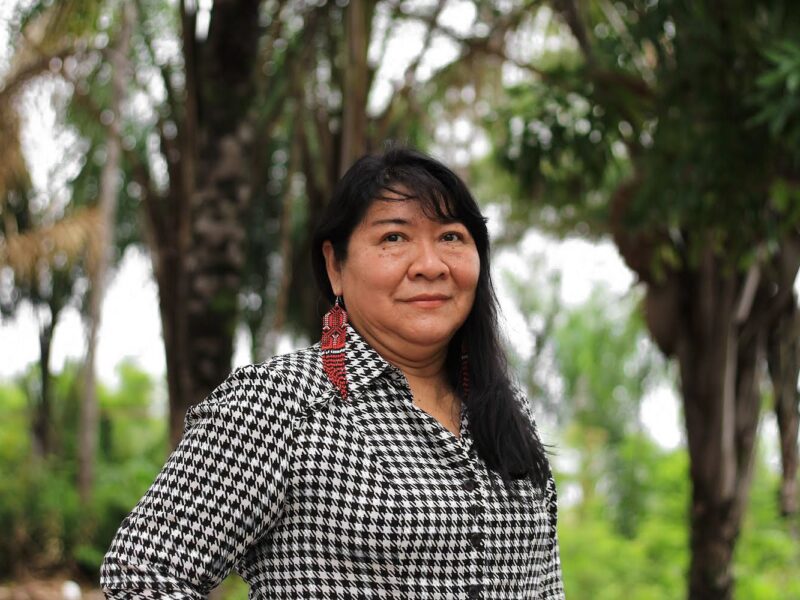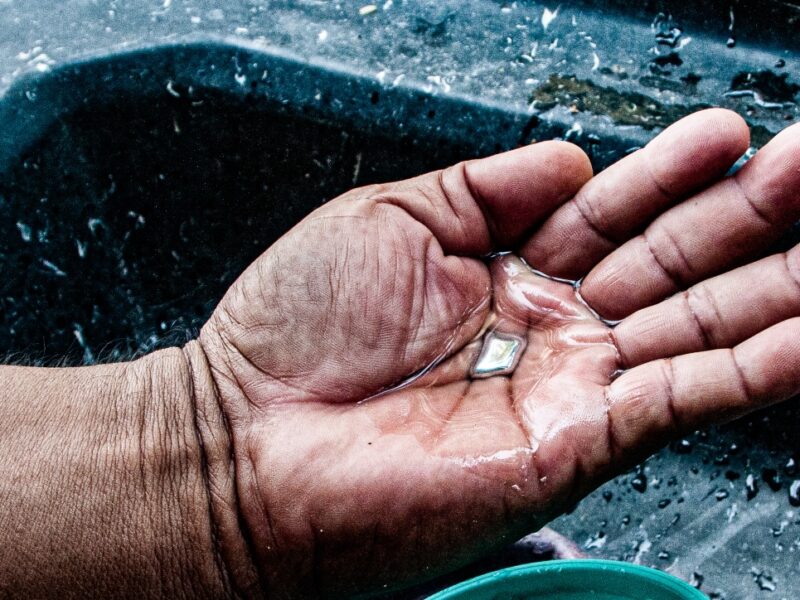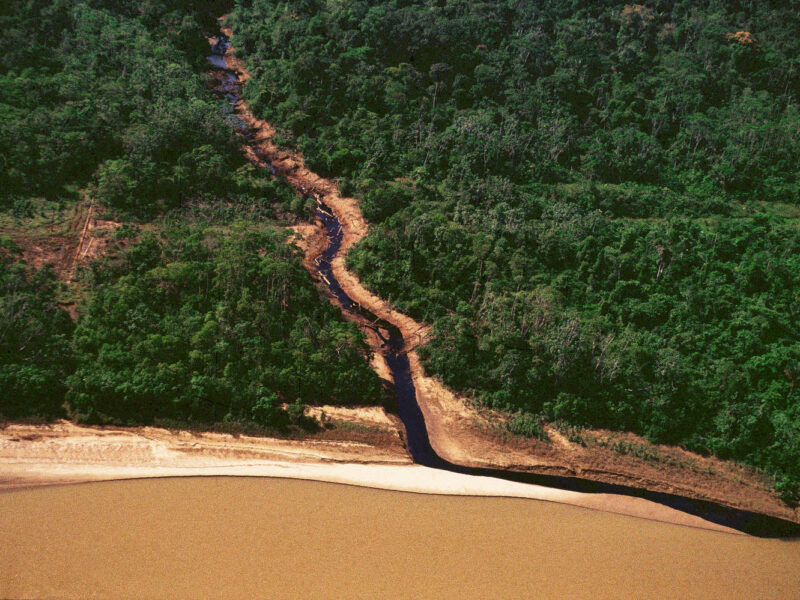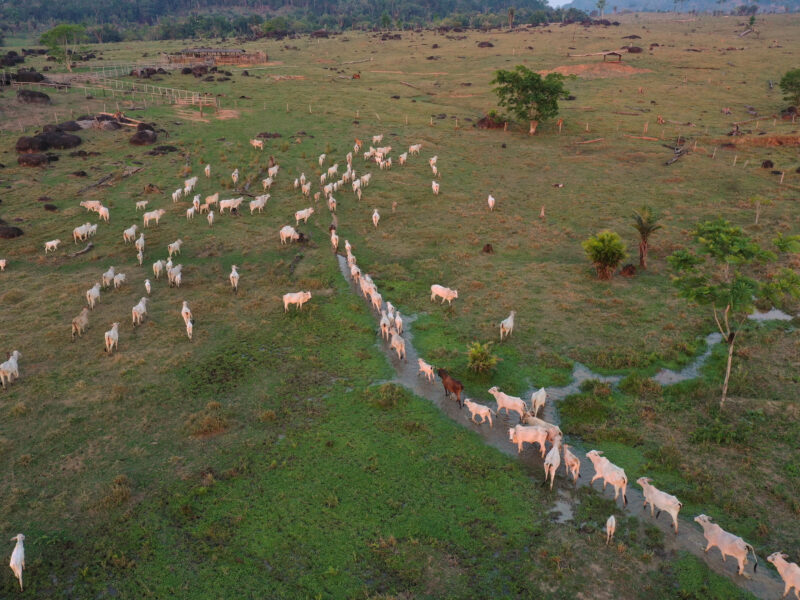Exclusive survey reveals a much greater impact than estimated by agribusinesses. Ministry of Indigenous Peoples shows concern and demands consultation, but Lula’s minister of transport is optimistic about project launched by Bolsonaro.
Category: Indigenous people
Despite lawsuit, Casino Group still sells beef from an Amazonian Indigenous land
A new investigation shows that farms located in the Uru-Eu-Wau-Wau Indigenous Territory in the Brazilian Amazon supplied two JBS meatpacking plants that sell beef to brands of the French supermarket giant.
New analysis reveals that 59% of the rivers inhabited by the Yanomami suffer impact from mining and invasions
Survey led by the INPE and Fiocruz, in partnership with InfoAmazonia, was conducted based on satellite images of indigenous land and analyzes the impact of territorial change on rivers and communities, including mining, degradation and deforestation. Over 62% of the Yanomami population live in areas under the influence of invaders.
Preserving Indigenous Lands Saves $2 Billion in Public Spending Per Year on Treatment of Fire-Related Illnesses
The fires are largely responsible for the pollution related to respiratory and cardiovascular diseases. A study shows that the Amazon rainforest is capable of absorbing 26,000 tons of particulate matter per year and that indigenous territories contribute 27% of this total. Preserving them prevents 15 million new cases of illness every year.
Deforestation in the Amazon: past, present and future
According to a new study from RAISG, in just five years, the Amazon could lose almost half of what it lost in the past two decades.
‘The fight goes on’: four indigenous leaders from Amazonia outline their expectations for the next four years
In a conversations with InfoAmazonia, Maial Kaiapó, Samela Sateré-Mawé, Júnior Hekurari Yanomami and Alessandra Korap Munduruku spoke about the historically important establishment of the Ministry of Indigenous Peoples, and the sense of relief following the dismantling of environmental policies.
Funai to seek support from the Amazon Fund: ‘things are destitute’, says Joenia Wapichana
Funai’s new president, who took office on February 3, told InfoAmazonia in an interview that the [agency’s] budget for demarcating and protecting Indigenous Territories is approximately R$ 90,000, which means she will be looking for alternatives for getting the agency back up and working.
From Bolivia to the Tapajós: mercury trafficking for wildcat mining operations on Munduruku Indigenous Territories
InfoAmazonia visited location where illegal mercury is sold along the border between Bolivia and Brazil, for illegal use by wildcat gold mining operations in Amazonia. After the Minamata Convention, Bolivia became the world’s largest mercury importer and it is estimated that half of the metal is sold as contraband to neighboring countries including Brazil, which has eliminated its legal mercury imports.
A legacy of broken promises
Lindaura Cariajano Chuje scrambled up the riverbank and strode into the forest, following a path only she could see. A step ahead of her, a young man with a machete cleared the way as she gave instructions: A little to the left, a bit to the right, now straight ahead. It was a muggy morning […]
Study reveals how Illegal cattle from Brazilian indigenous land goes to the shelves of French supermarket chain
A French court received new complaints in a groundbreaking lawsuit that investigates Casino Group for selling meat from indigenous lands. Organizations have traced herds from the Uru-Eu-Wau-Wau Indigenous land in Brazil and calculated compensation for social, cultural, and health damages




